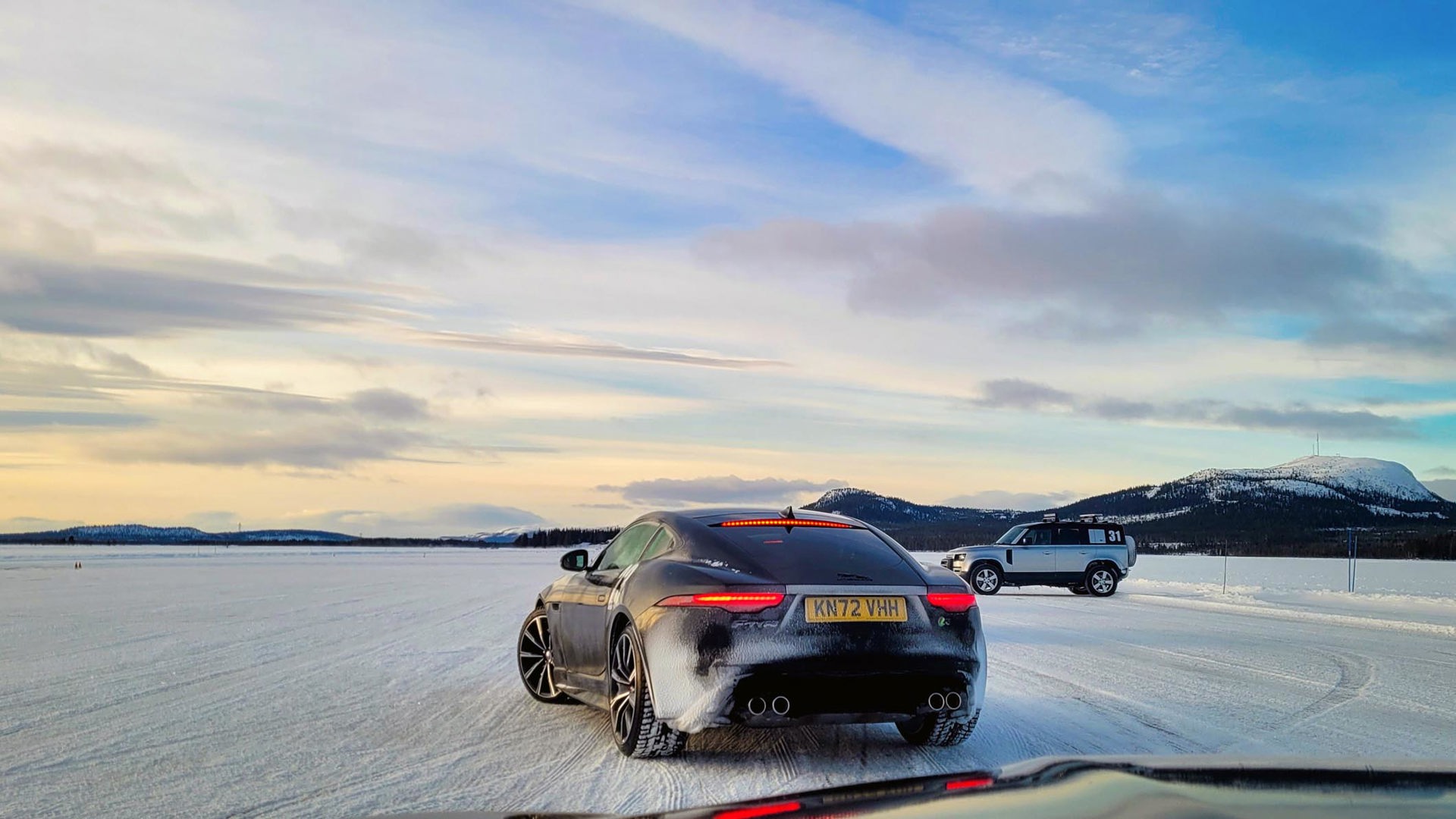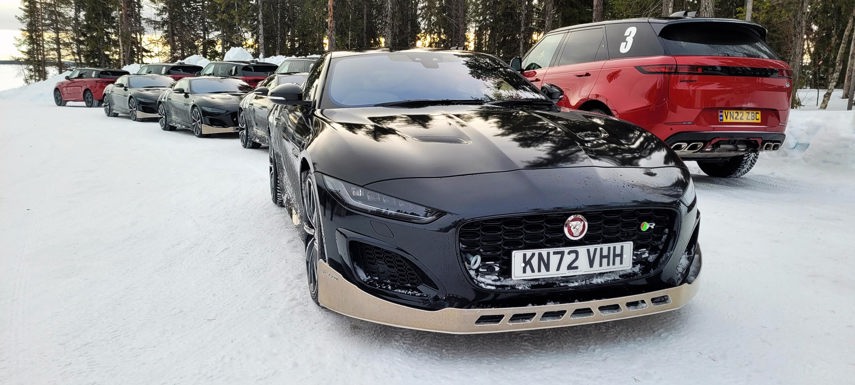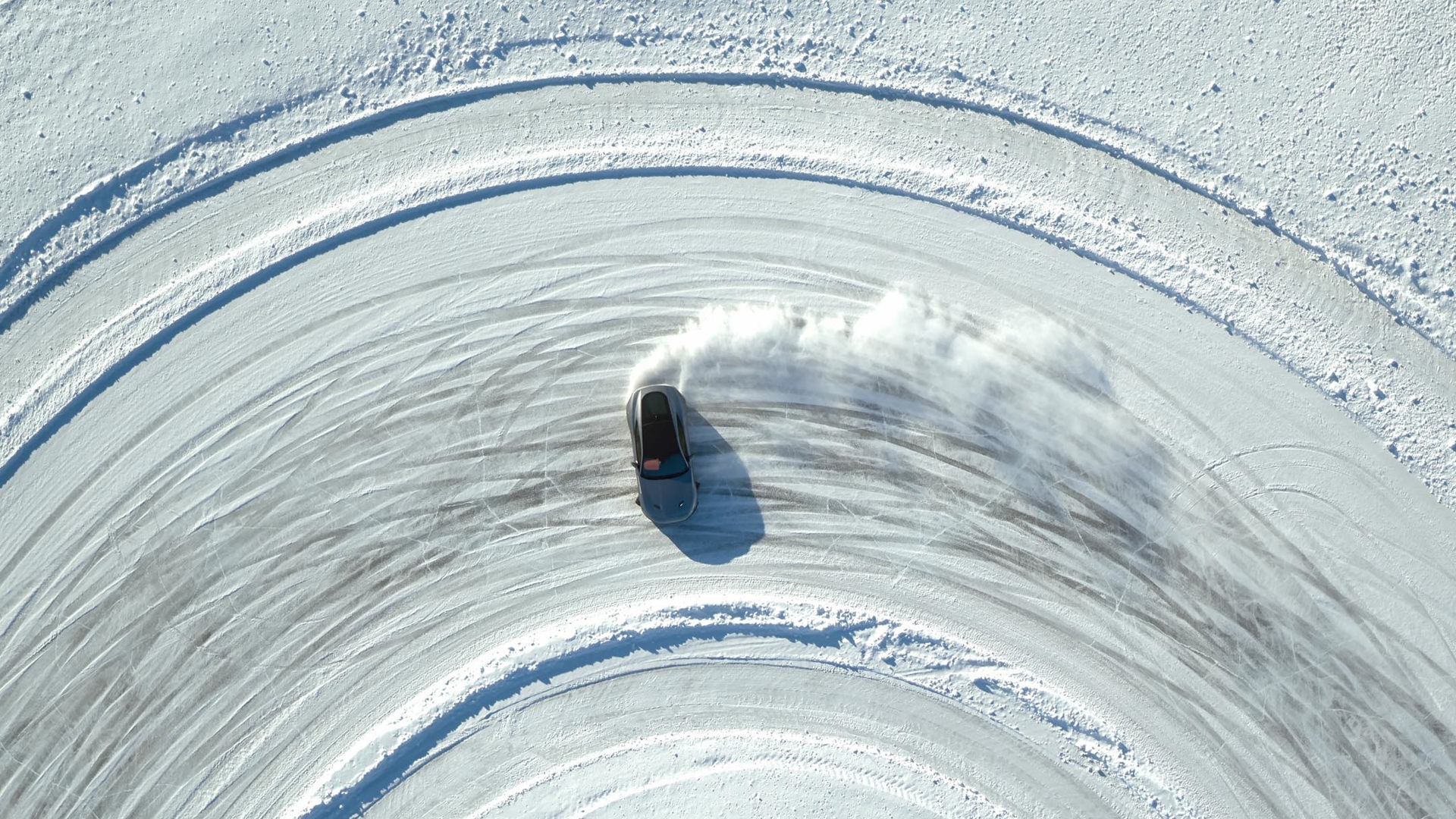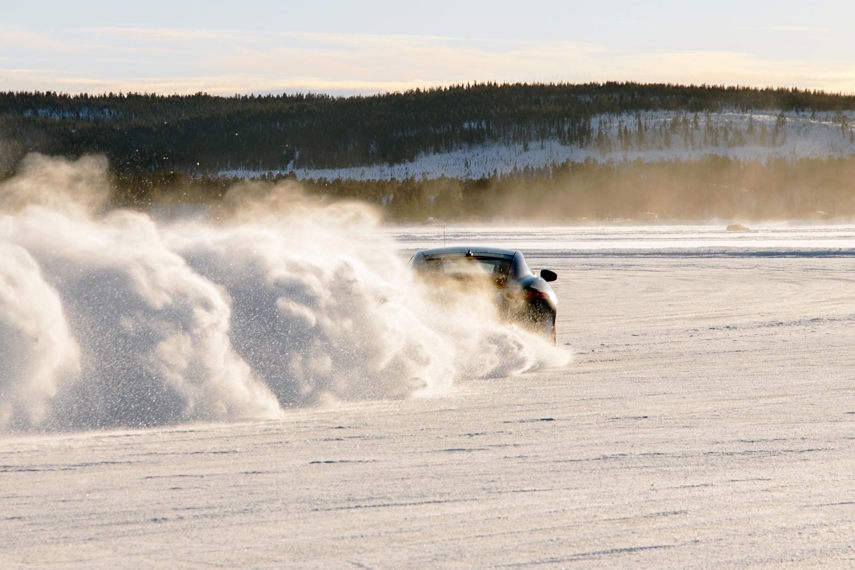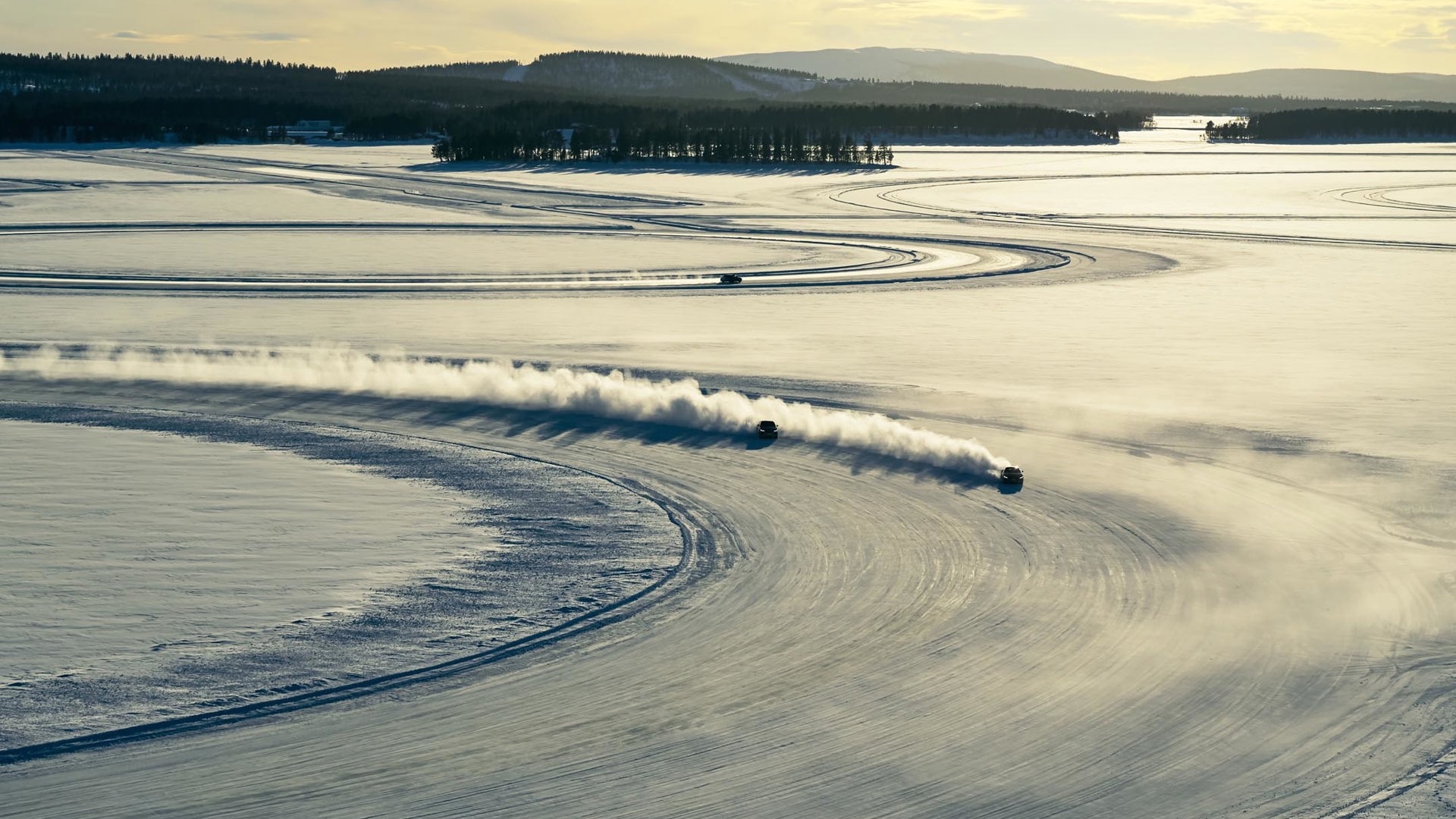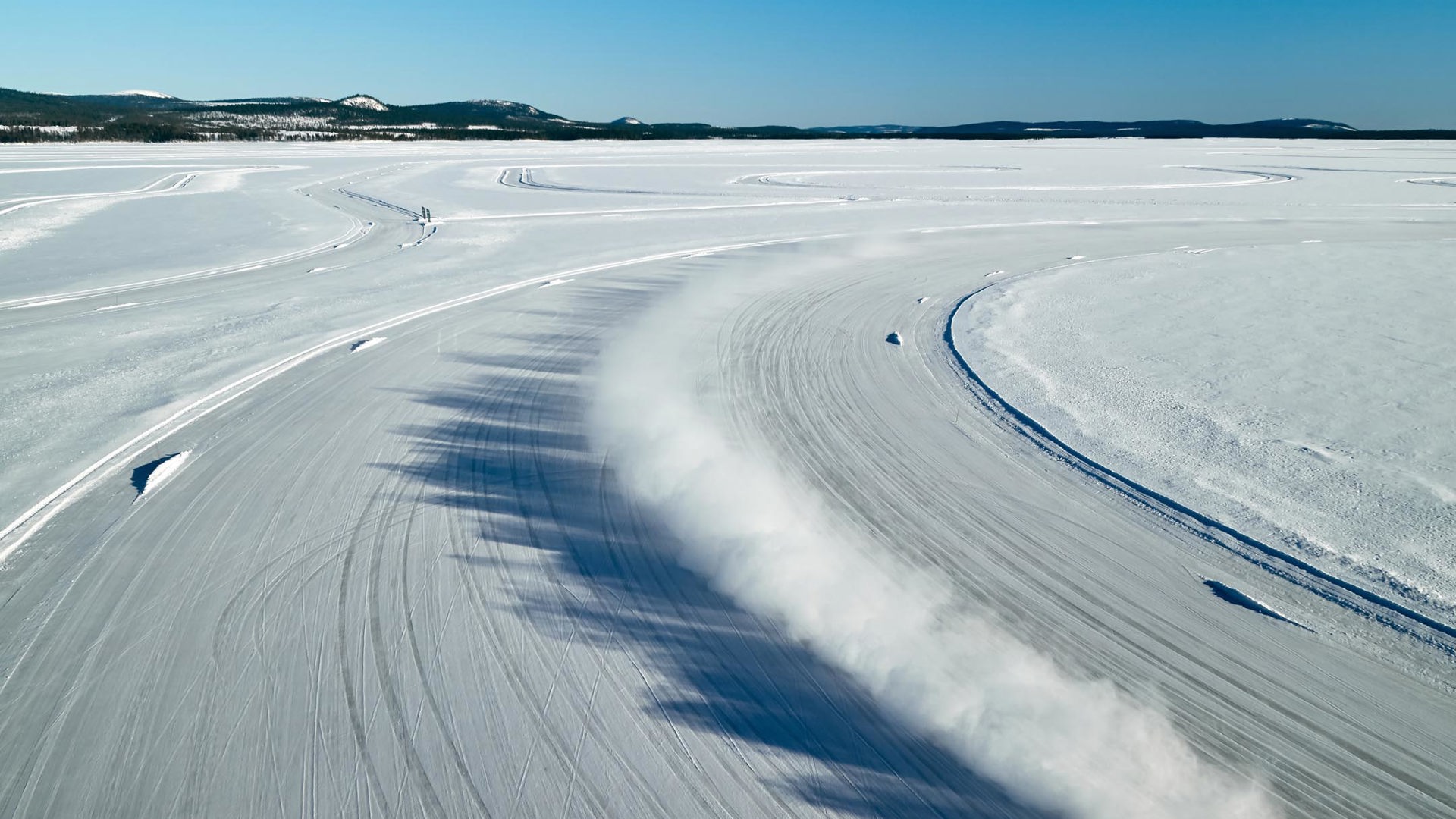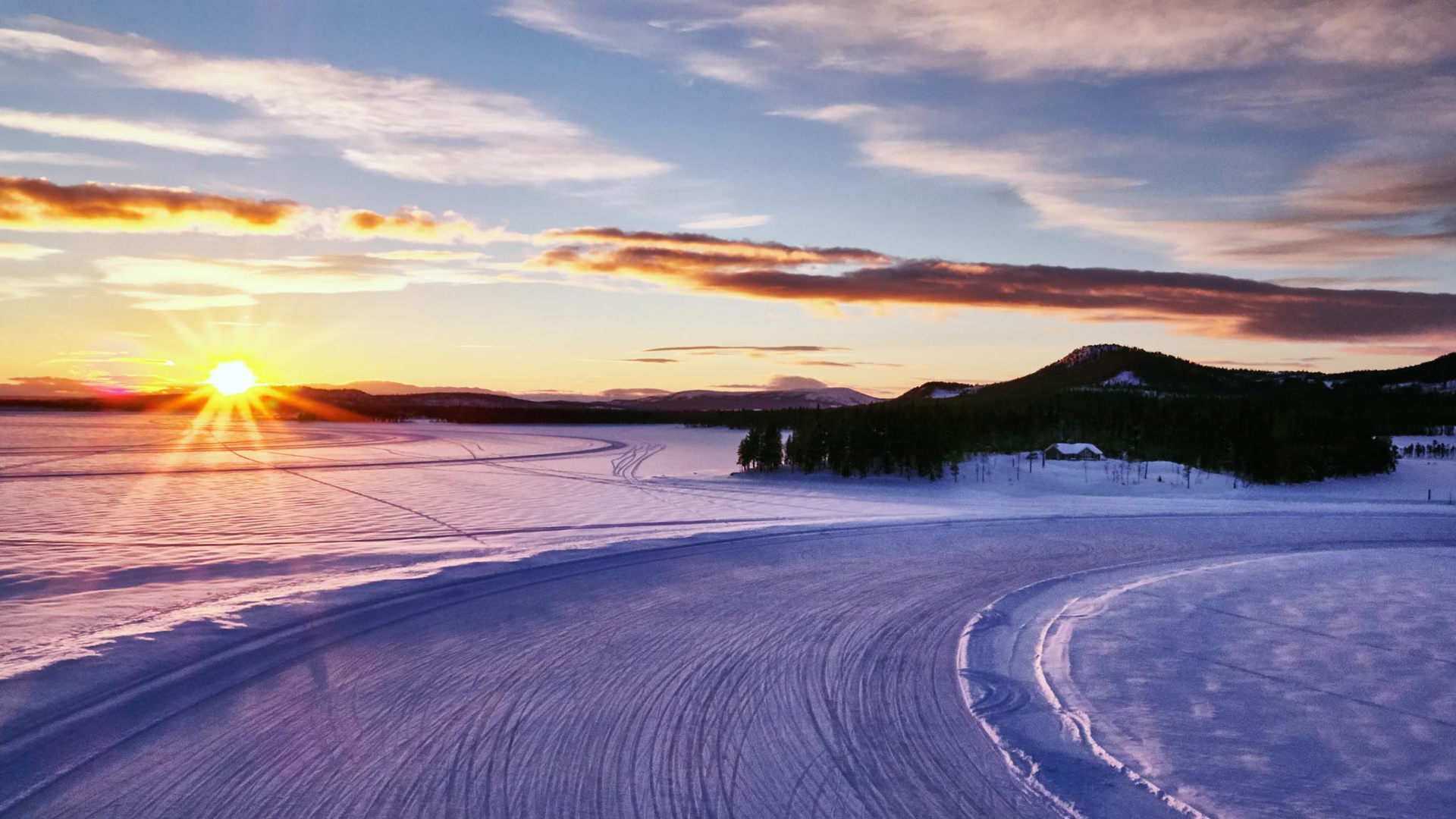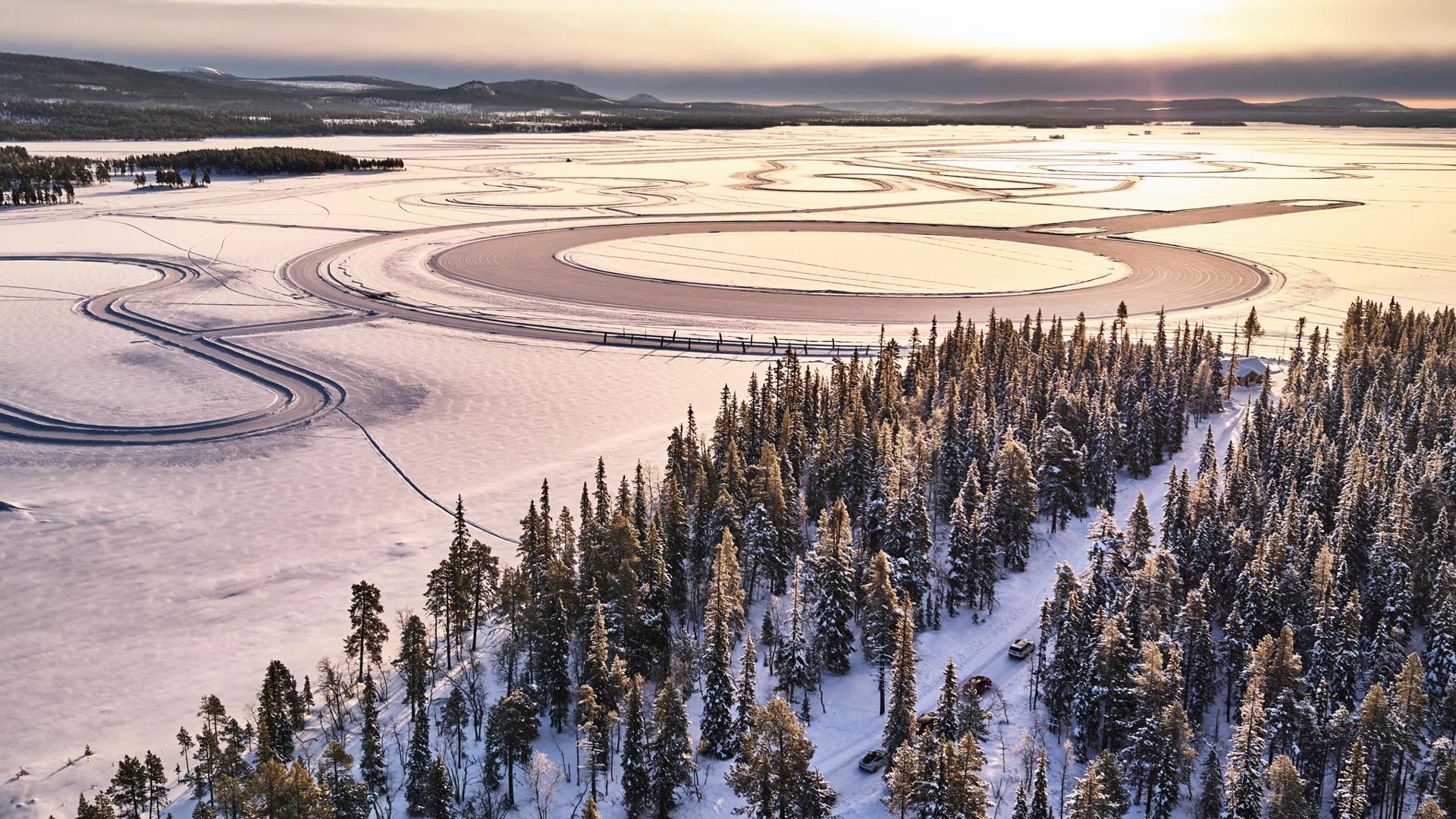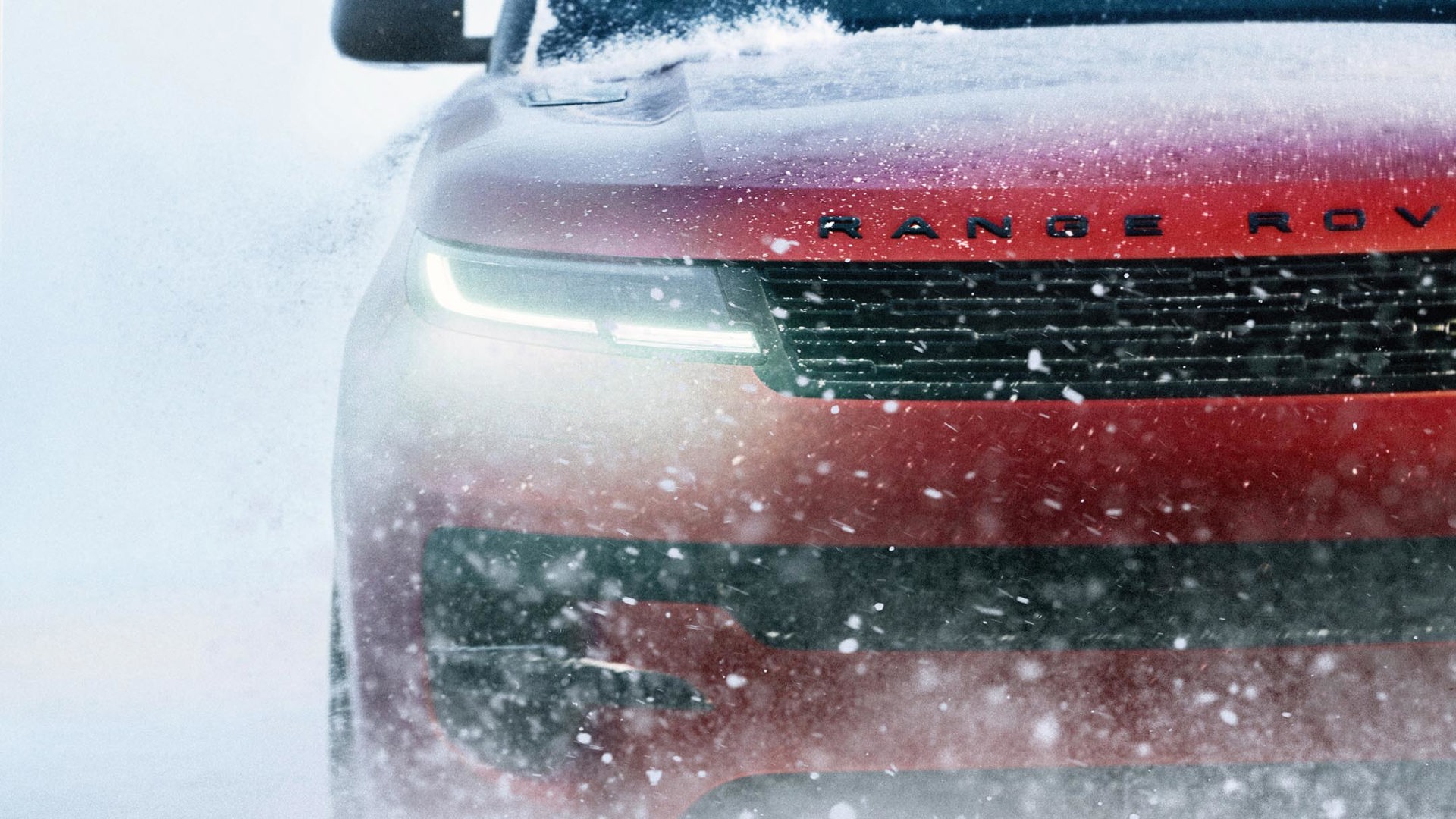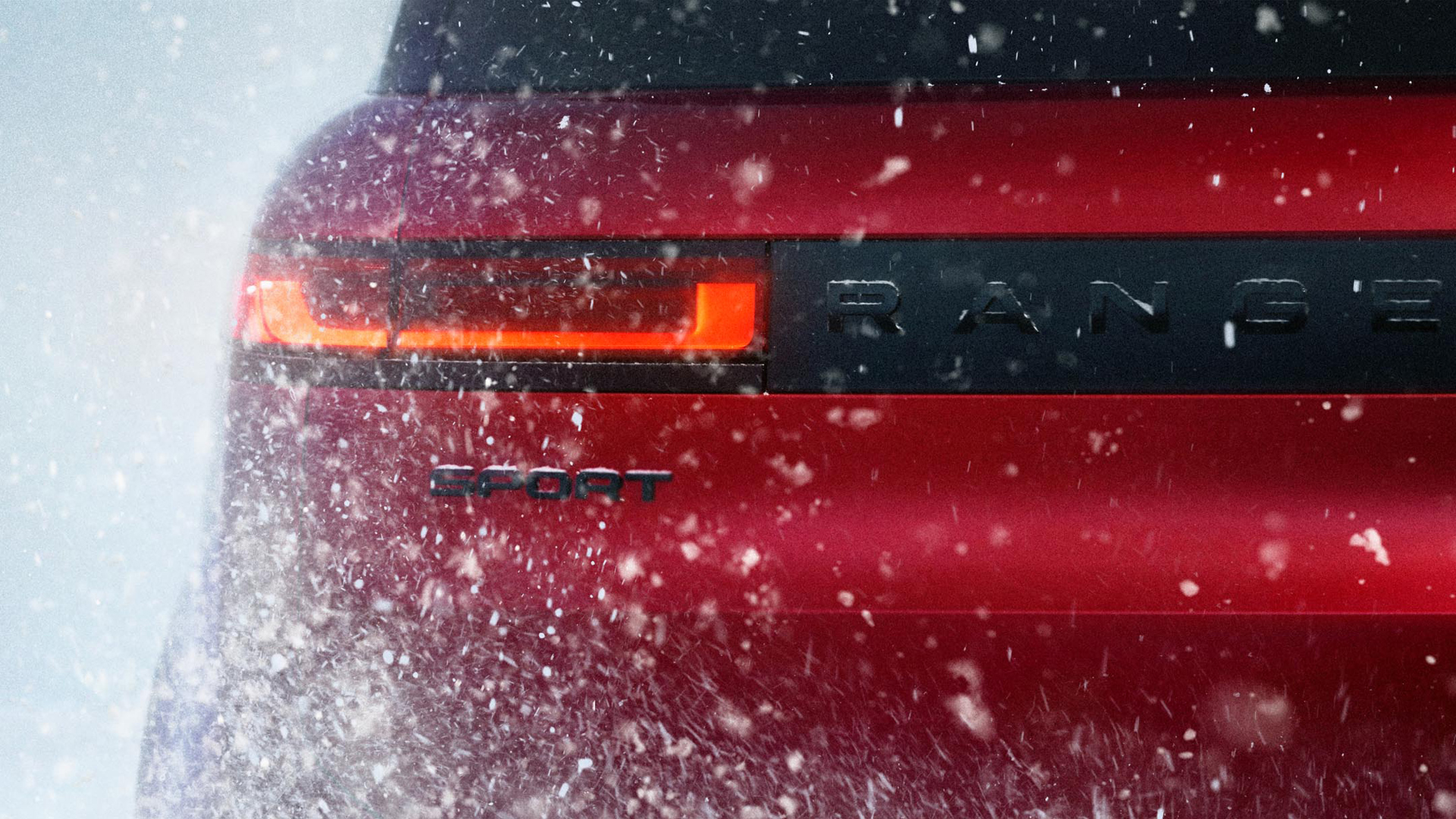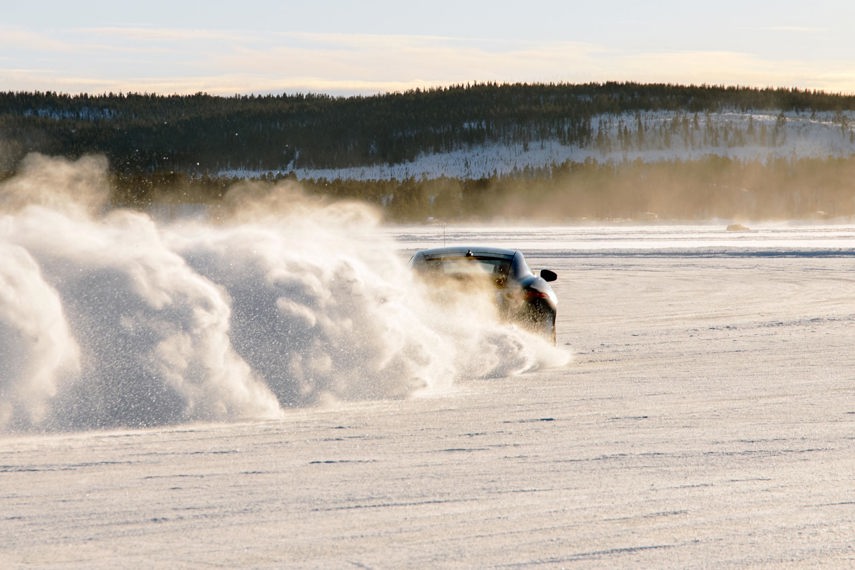Power is nothing without control – that’s the main takeaway from the Jaguar Land Rover Ice Academy in Sweden.
While it’s a lesson that was supposed to be specific to the cars and SUVs we drove on the edge of the Arctic Circle, it felt more like a reminder from my therapist than something I’d learn at a performance ice driving school. But there I sat behind the wheel of a Range Rover Sport, certain my co-driver could hear my heart pounding outside my parka. It wasn’t because of adrenaline or excitement, either. It was fear. I had flashbacks of getting into a bad car crash as a teenager, and the worst part is that it was completely my fault. I took an on-ramp far faster than my skill level could handle back then, and I slammed into a concrete barrier and destroyed my car. Miraculously, I wasn’t physically hurt, but that day changed me forever.
My fear of slamming into another concrete wall prevented me from learning to push a car to its limits so I’d know how to prevent a similar situation from happening again. I was stuck in a frustrating dilemma.
The shame of getting into a crash that was my fault, and the subsequent shame of being an automotive journalist who fears racetracks, consumed me. I’m a confident driver, but I still feel embarrassed among my peers. I also feel pressure to be a flawless driver because of the stereotypes often directed at people who look like me.
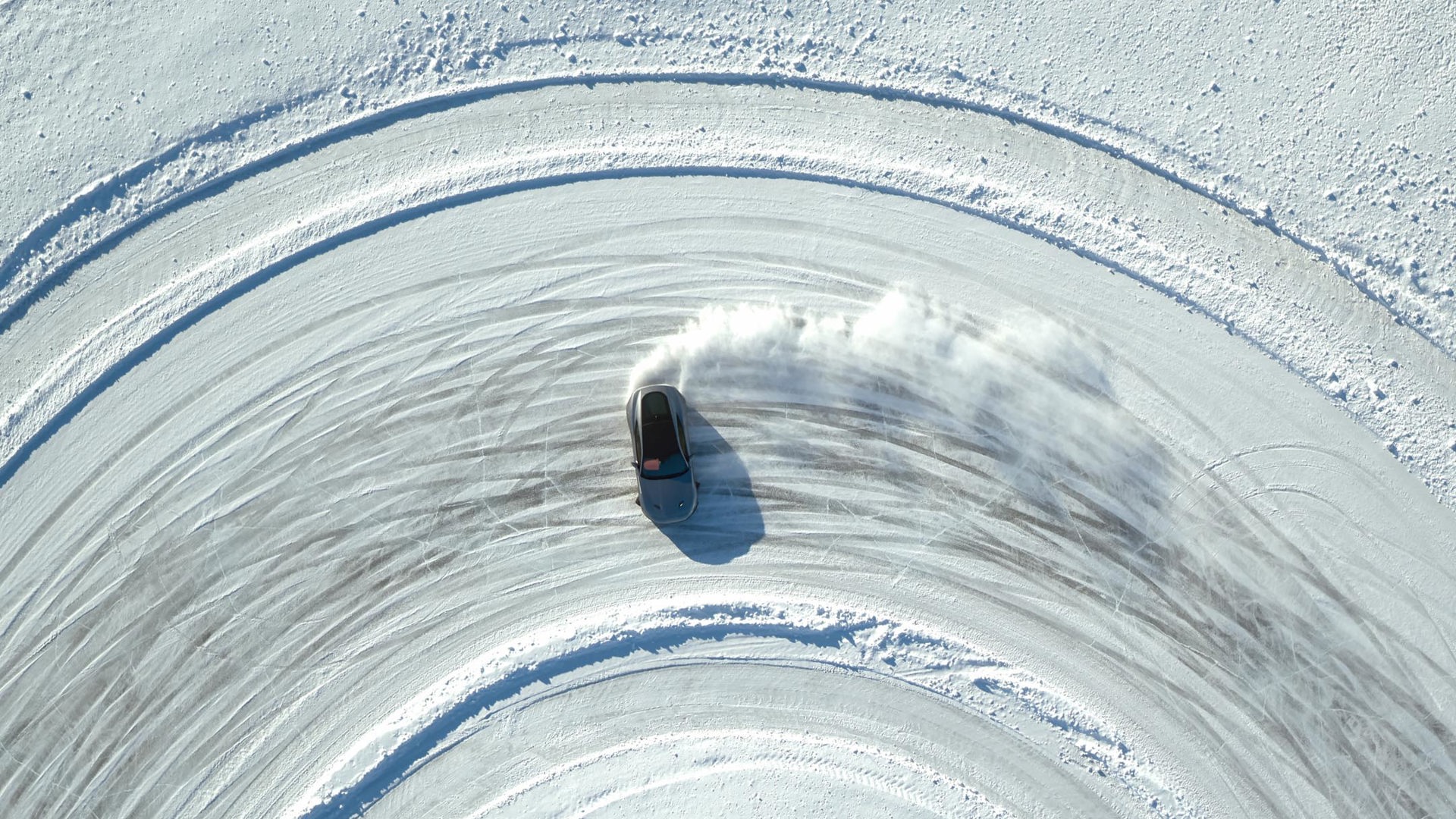
I’ve always wanted to learn to drift. Not only does it look freaking cool, but I also knew it would help me overcome the mental hurdles seared into my brain by that traumatic crash. But here I was during this once-in-a-lifetime experience on a frozen lake, crippled by fear.
A few deep breaths later to shake the shame, and I was doing successful mini drifts after a few slow laps, feeling better and gaining the confidence to go faster – and then suddenly, a wrong move. Instead of looking where I wanted to go (the number-one most useful and deceptively obvious driving tip), I looked at the snowbank I was quickly approaching. I spun out and slammed right into it. Memories of my car crash returned, and I felt defeated.
Losing control, stuffing luxury cars and SUVs into snow banks, and requiring a Land Rover Defender to tow me out multiple times, I considered quitting the experience and spending the rest of the time sulking in my hotel room. But then my co-driver – who happened to be an accomplished driver who often tracks his McLaren – slammed a Jaguar F-Type R into a snowbank and left a trail of broken body panels on the ice track. It happened to nearly everyone who was there. The recovery vehicles were busy, and it wasn’t always my fault. Most drivers, even the ones with decent track experience, were spinning out and losing control. My instructor, a professional rally driver, told me he also nearly made a mistake while doing a demo. My struggle was everyone else’s struggle, regardless of how much experience they had.
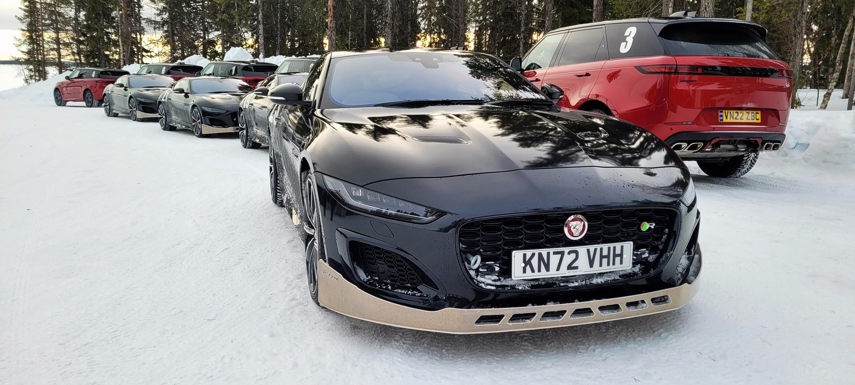
Quitting would not only be stupid, because it would be like refusing to get cooking tips from Julia Childs, but it would do nothing to help me deal with my unresolved trauma. I needed to do what scared me so it would stop scaring me. And I needed to remind myself that being embarrassed is a waste of time. If someone is judging me, that’s their problem, not mine. It’s wild how that works.
At the Ice Academy, the margin for error is much more forgiving than it is on an asphalt track. It’s like going bowling with the gutter guards and too much wax on the lanes. If you screw up on an asphalt, the likelihood of crashing into a concrete barrier, injuring yourself (or others), and irreparably damaging a car is high. The worst that can happen on an ice track if you make a mistake is hitting a snowbank and getting slightly embarrassed. Maybe some trim pieces go flying.
With fewer consequences for your errors, you can push harder. And the beauty of driving on an ice track is that slow is fast. You don’t need to drive fast on ice to initiate and sustain a drift. You learn the fundamentals at low speeds and build your skills from there.
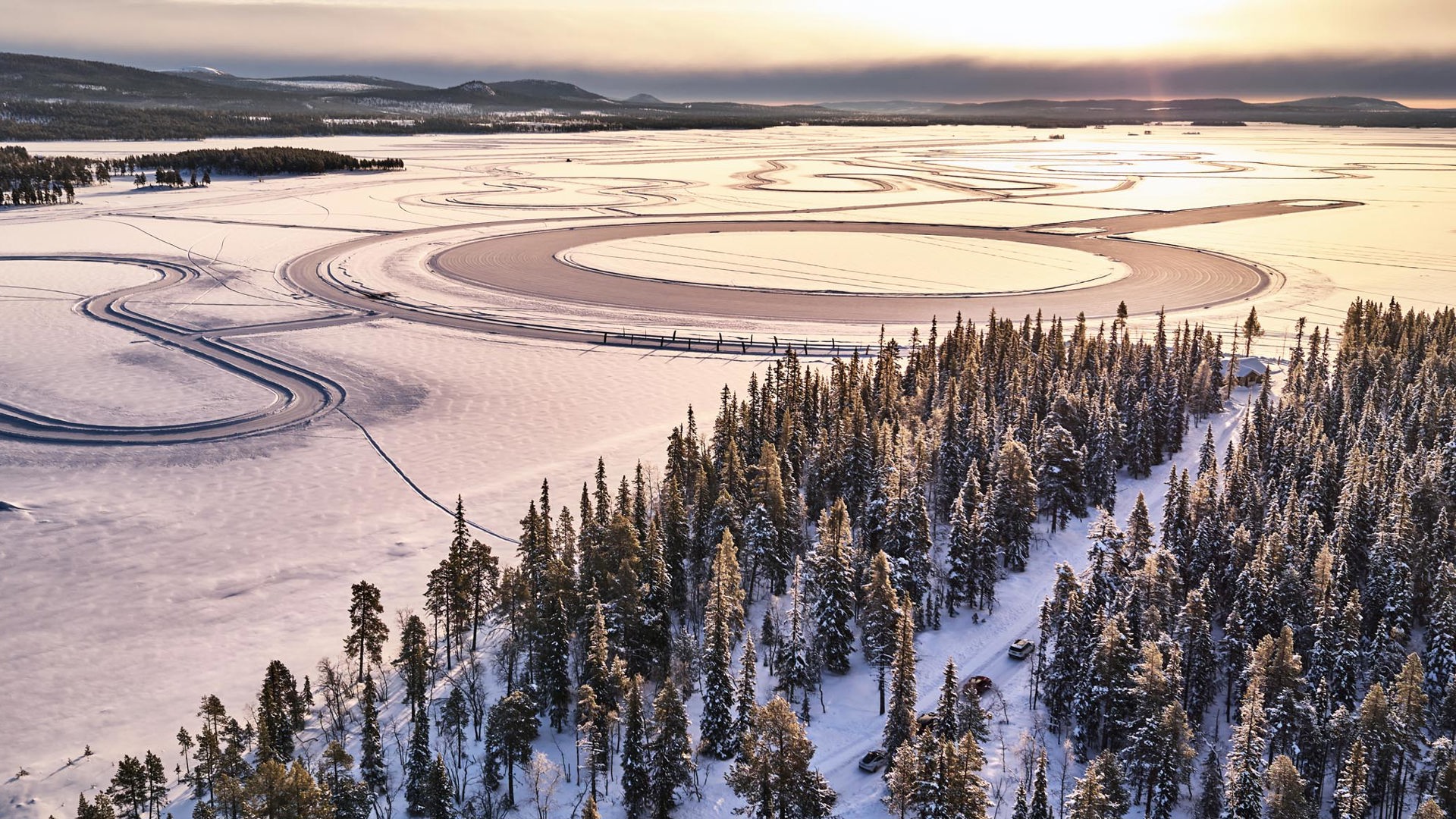
I won’t brag that I did amazing at the Ice Academy. I was pretty terrible. They called me a ballerina because I was spinning so much. The embarrassment would have consumed the old me, but I laughed it off and took some comfort in the fact that other people were having similar struggles, so I consider the experience a huge success. The Ice Academy allowed me to drive in a way that scared me previously and, under the watchful eye of professionals, taught me how I might be able to correct a loss of control and turn it into something more fun.
Power is certainly nothing without control. But control is something you learn, and you block yourself from learning when you’re consumed by fear. The Jaguar Land Rover Ice Academy allowed me to regain control of my power, inspiring me not to let my fear get in the way of becoming a better version of myself and not letting my past mistakes define me.

